Detection & Diagnosis
Detection and Diagnosis of Breast Cancer
Mammograms
In addition to seeing your doctor for routine examinations, it is important to discuss having routine screening mammograms, as an abnormal finding on a mammogram is frequently the first indicator of breast cancer in women without symptoms.
The American Cancer Society recommends that “women age 40 and older should have a screening mammogram every year and should continue to do so for as long as they are in good health.”
In the fall of 2009, the U.S. Preventive Services Task Force made headlines when it released a controversial recommendation that most women without symptoms of breast cancer should begin to have biannual screening mammograms at age 50. In spite of the Task Force’s recommendation, the American Cancer Society, the American College of Surgeons, the American College of Radiology and many other experts continue their strong recommendation that yearly screening mammograms begin at age 40.
How Is A Diagnosis of Breast Cancer Made?
If a mammogram or any other finding suggests that breast cancer might be present, a biopsy is necessary to make a diagnosis. A biopsy is a sample of tissue taken from the breast (or other site) and evaluated under a microscope and with special tests to determine if cancer cells are present. Sometimes a biopsy will involve a short outpatient surgical procedure, but in many cases the sample for a biopsy can be obtained in your doctor’s office using a needle without even making an incision.

